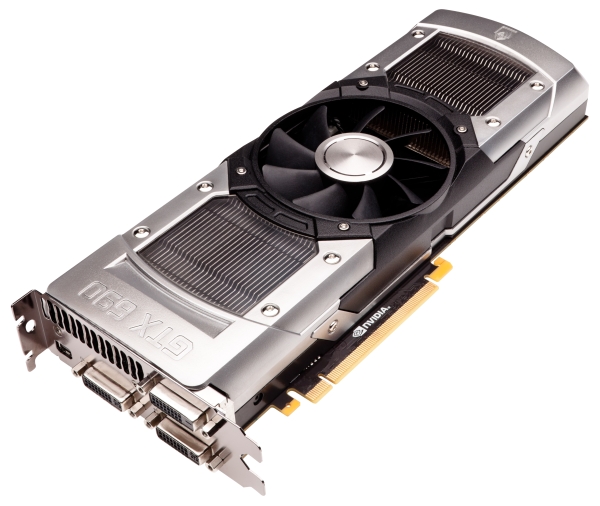The GTX 690 is finally here and now we can see Nvidia's latest dual-GPU beast in action. Based on two Nvidia's 28nm GK104 Kepler GPUs placed next to each other on a single PCB, the GTX 690 clearly ends up to be the fastest graphics card that money can buy, and speaking of money you will need a lot of it to get your hands on a GTX 690.
In case you somehow managed to miss it, Nvidia's 28nm GK104 Kepler GPU certainly surprised everyone when Nvidia started to mention performance per Watt and with a total of 1536 CUDA cores, 128 texture units and 32 ROPs, all below 195W TDP, certainly made a significant pressure on AMD's high-end lineup.
Nvidia has always put a lot of effort to have a fastest graphics card around, no matter the cost, actual design, thermals or power consumption, but with Kepler, the job was certainly a much more easier. The GTX 690 features two fully enabled GK104 Kepler GPUs for a total of 3072 CUDA cores, 256 texture units, 64 ROPs and dual 256-bit memory interface paired up with 2GB of GDDR5 memory for each GPU.

In order to keep the TDP under 300W Nvidia had to cut some corners and clocks were the obvious way to go. While the GTX 680 was clocked at 1006MHz for base and 1058MHz for boost GPU clock, each GPU on the GTX 690 works at 915HMz for the base and 1019MHz for the boost clock. The memory on the GTX 680 was clocked at 6008MHz and luckly the GTX 690 shares the same clocks. As the new GTX 690 features two 8-pin PCI-Express power connectors, the theoretical maximum TDP is set at 375W (150W per 8-pin PCI-E power connector + 75W from PCI-E slot). This leaves a lot of headroom for GPU boost as well as additional overclocking in case you want it faster for some reason.
The good part of the story is that the GTX 690, perfomance wise, easily reaches the levels of two GTX 680 graphics cards run in SLI. Two HD 7970 in Crossfire still end up a bit faster in some benchmarks and games but we are yet to hear some precise details regarding AMD's dual Tahiti HD 7990 graphics card that is allegedly scheduled to show up at Computex and driver issues just make Crossfire too unstable.
Of course, since we are talking about ultra high-end graphics cards, it is just a waste to talk about resolutions below 2560x1600 and with a price set at US $999 it ends up to be the most expensive reference consumer graphics card to date.
We also must mention the looks of the new GTX 690 card as Nvidia certainly did its best with this one and cast aluminum, injection molded magnesium fan housing, transparent heat resistant polycarbonate shrouds and laser etched Nvidia and GTX 690 logos certainly makes it one of the most impressive graphics cards when it comes to design.
The GTX 690 is the fastest, the best looking, and the most expensive graphics card around. With a price tag set at US $999, it is reserved for those with deepest pockets that like to game at 2560x1600 and higher resolutions. All we need to see now is AMD's response that could hopefully push the price a bit down.
You can check out some reviews below.
- Anandtech.com
- Techpowerup.com
- Bjorn3d.com
- Hardwareheaven.com
- Hardwarecanucks.com
- Neoseeker.com
- Xbitlabs.com
- Hothardware.com
- (other sites are more than welcome to e-mail their review links)





